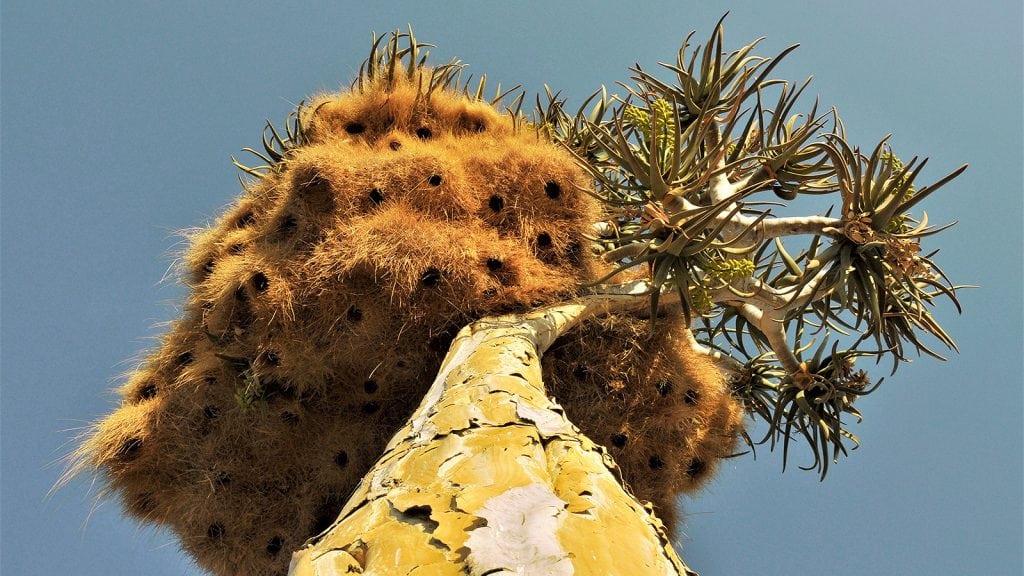When building the nest, sociable weavers use different materials for different purposes. Large twigs form the roof of the nest and dry grasses create the separate chambers. Sharp spikes of straw protect the entrance tunnels from predators.
Nesting chambers are lined from top to bottom with soft plant material, fur, cotton, and fluff. A proper nesting tree has a long, smooth trunk and high branches to discourage slithering predators such as Cape cobras and boomslangs, a type of tree snake.

Large nests help the sociable weavers stay comfortable in the harsh climate of the Kalahari Desert. During freezing winter nights, a move to the nest’s well-insulated center chambers helps the little birds stay warm. Scorching summer temperatures are easier to weather when roosting in one of the outer chambers of the nest.
Sociable weavers need less water than any other bird. Most never take a drink, getting all the moisture they need from their food: bugs. Insects make up 80 percent of their diet, and juicy harvester termites are a favorite.
The rest of the sociable weaver diet is seeds from grasses. Most of their food is collected while the birds are on the ground, but they are able to catch insects in flight, too.















